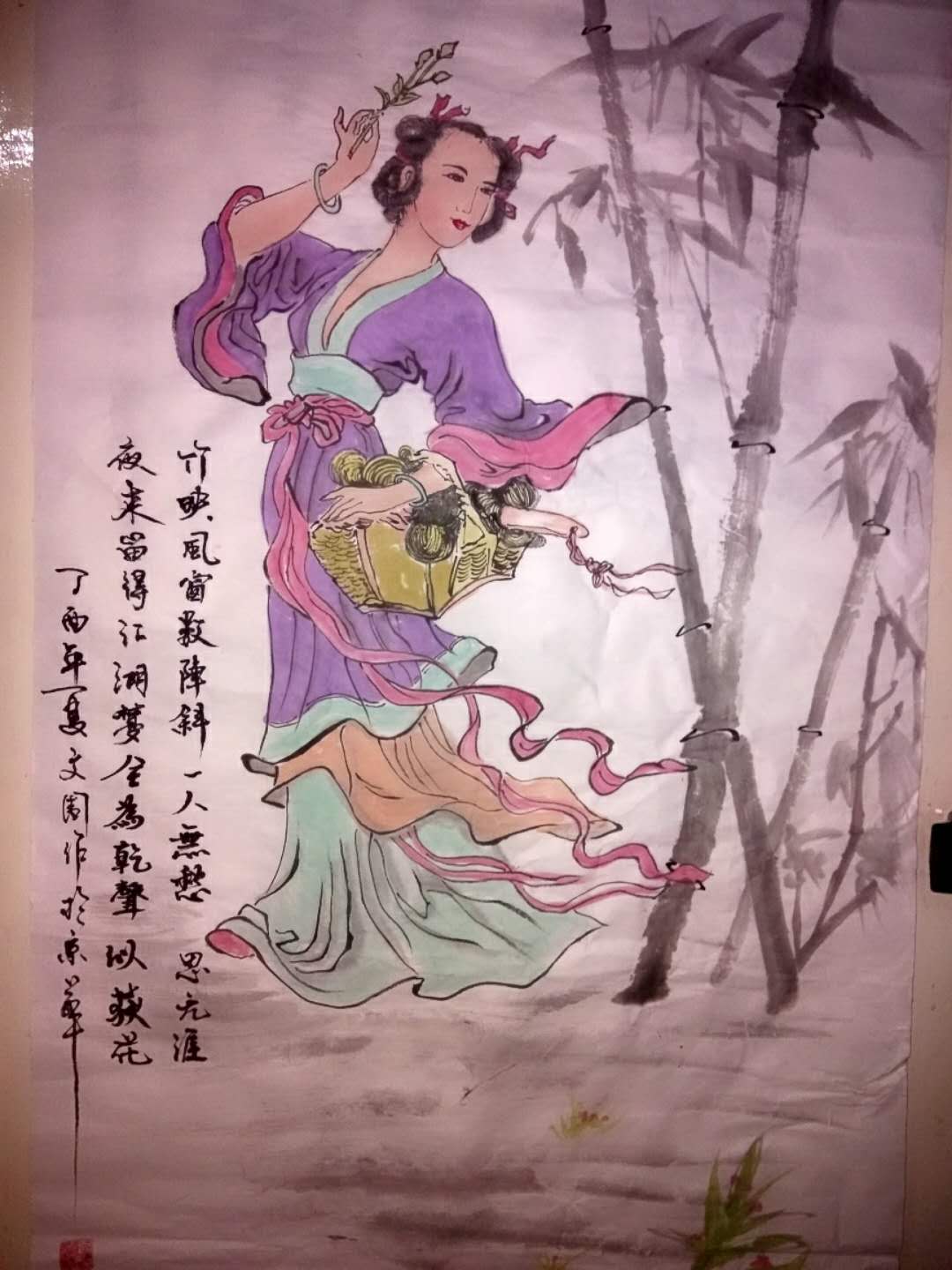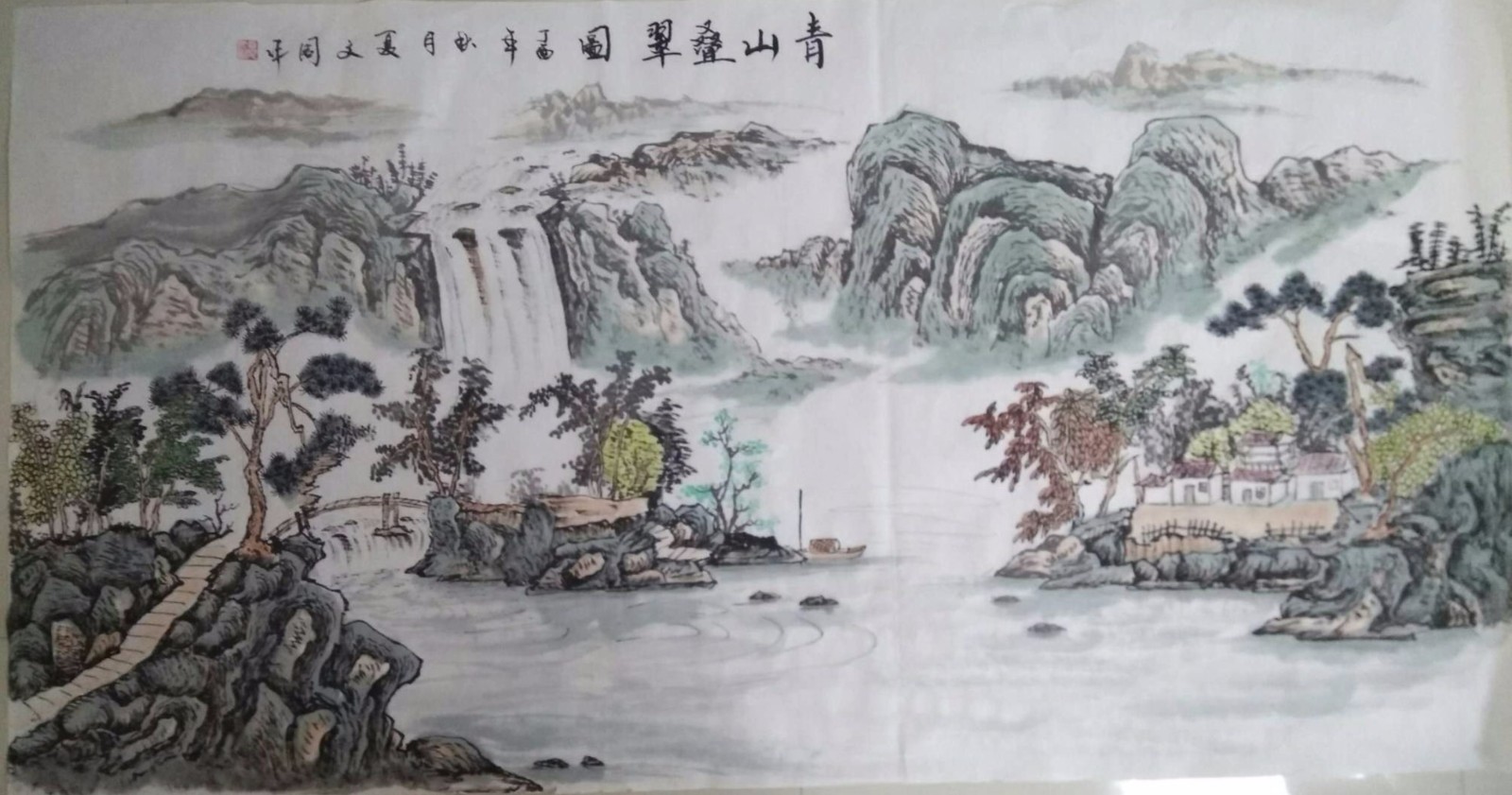
夏文周——影视编剧、书画家,现为中国邦交国礼中心首席顾问、中国民族艺术家联合会驻会主席、中国书画艺术联合会常务副主席、中国艺术品鉴定中心主任、中国潮文化艺术研究院副院长、纪晓岚书画院顾问、中国书法家协会会员。?
屡次策划书画大型书画交流笔会、赛(展)、组团能力强。08年受聘为国际中国美术家、书法家协会副秘书长至今。由于酷爱书法艺术,深受书书法界名家影响,舒同、柳倩都是对其影响较大的老师。国画是深造中央美院后又受到徐湛、吴智涛老师指点,是技法比较成熟的画家。
Xia Wenzhou, a film and television screenwriter as well as a calligrapher and painter, now is the chief advisor of China Diplomatic Relations and National Present Center, the chairman of China Nation Artist Association, the executive vice chairman of China Painting & Calligraphy Art Association, the director of China Art Assessment Appraisal Center, the vice president of China Popular Culture & Art Research Institute, the adviser of Institute of Calligraphy and Painting of Ji Xiaolan and a member of China Calligraphers Association.
Mr. Xia has rich experience and strong capability in organizing large-scale calligraphy and painting communication meetings, contests and exhibitions. Since 2008, he has served as the deputy secretary general of International Association of Chinese Artists and Calligraphers till now. Out of his ardent love towards calligraphy, Mr. Xia has asked great calligraphers for instructions, so he is deeply influenced by them, Shu Tong and Liu Qian in particular. As for traditional Chinese painting, after gaining a diploma of China Central Academy of Fine Arts, he became a skillful painter with the guidance of Xu Zhan and Wu Zhitao.他的书法作品现在我们看到的也有狂草最多,狂草足以看出从二王入手的基本功,和张旭、怀素至宋四家的影响,结体和用笔松动流畅,扎实浑厚。他早年多临石门颂,对秦隶犹喜好,近几年来他在简犊帛书的研习上下了很大的功夫,遍临存世的简帛书字帖,又把隶和草的结合进行了大胆创新,沉稳之中又灵动洒脱,充满典雅质朴,流动酣畅的韵致,可谓别开生面。已受到社会的关注并得到一些专家的肯定。国画由于家传和在中央美院深造,在书画圈名家朋友较多,受名家指点也有很深的造诣,擅长小写意,工笔及其山水创作,属于为数不多的国礼订单画家。国家图书馆曾约夏文周用简帛书体书写“古兰经”卷并于2006年完成并收藏。
Among all his calligraphy works, Kuangcao(an excessively free cursive style) is the most common style. It can be seen that he started from learning techniques of “Two Wangs”(Wang Xizhi and his son Wang Xianzhi, both famous ancient calligraphers), and then studied the works of Zhang Xu, Huai Su and the four calligraphers of the Song dynasty (Su Shi, Huang Tingjian, Mi Fu and Cai Xiang) . All this makes his writing smooth and vigorous. He often copied Ode to Shimen and especially loved Qin Li (an ancient clerical script) in his early years, but in recent years, he has devoted himself to bamboo slips and silk scrolls and nearly finished all the relevant copybooks. He also broke a new path by combining the Li style and the Cao style and creating steady but free, simple but elegant writings. This bold innovation has caught public attention and been recognized by some experts. Apart from his family education of painting and his study at China Central Academy of Fine Arts, Mr. Xia has many friends in the calligraphy and painting circle who can give him professional advice as masters of this art. Therefore, he has a deep understanding and great achievements in traditional Chinese painting. Given his excellence in small freehand painting, fine brushwork and landscape painting, he is among the few painters who receive orders of national presents. The National Library once asked Mr. Xia to write the Quran in the style of bamboo and silk literature and enshrined the finished work in 2006.?
数年来,书画作品曾多次在全国书画篆刻大赛中获奖。?
??? 作品收藏于《中国中央国家机关书画家协会国礼精品集》、《当代书画名家博览》书画集、《人民功勋艺术家书画精品宝典》书画作品,入编《海峡两岸华人艺术家书画作品全集》。?
??? 2007年被授予“中国百杰著名书法家”荣誉称号。?
??? 至今已参加数百次书画交流笔会,并经常被邀请出国交流,在书画圈有较好的口碑和知名度。?
??? 其作品以作为中国国宾礼品由有关重要领导酬赠外宾较多,在国际华人中享有很高知名度,近年东南亚一些国家,日本、马来西亚、新加坡、以及香港地区对他的墨迹亦多有收藏,并视之为珍藏艺术品。
His works have won numerous prizes in National Calligraphy, Painting and Carving Contests in the past decades.
His works are incorporated in China National Presents Collection of Central Government Calligraphers and Painters Association, A Works Collection of the Contemporary Brilliant Calligraphers and Painters, A Works Collection of People’s Artists of Merit and The Complete Works of Chinese Artists across the Strait.He was awarded as one of China’s 100 Greatest Calligraphers in 2007.
Enjoying a good reputation and public praise, he has attended hundreds of calligraphy and painting communication meetings and often goes abroad for exchanges at the invitation.
His works are not only given to foreign guests as national presents by leaders but also welcomed by oversea Chinese. In recent years, people in Hong Kong region, Japan and some Southeast Asian countries such as Malaysia and Singapore have regarded his works as precious artworks and followed the trend to collect them.






